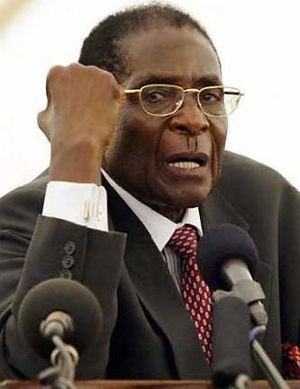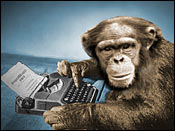WristWatch
WristWatch was a monthly magazine in the United States, published by Lucky Seahorse Manufacturing Concern, that ran from April 1973 until March 1988. In this time WristWatch earned recognition amongst the media for several groundbreaking reports on wrist pathologies, as well as for relating important wrist health developments easily to the man on the street.
Humble beginnings[edit | edit source]
WristWatch was founded as an outlet for the eccentric research of Atlanta optometrist Gareth L. Fankhouser, who measured various aspects of the wrist in relation to cup size on his female patients. Fankhouser collected over 800 photographs of wrists and breasts over a three year period, but never intended to publish his findings, for fear of rejection by the scientific community. However, due to increasing pressure from his subjects concerning the relevancy of such research during their eye exams, Fankhouser was forced to publish his research legitimately to avoid crippling legal action.
His vehicle for this research was WristWatch. The first issue of the magazine featured a small sealed section of breast and wrist research pictures, and was self-published by Fankhouser but sold poorly. Renowned magazine researchers have put this down to a drab black and white wrist X-ray on the cover, a motif common to most of the subsequent issues. However, over the coming months Fankhouser began to see his magazine turn a profit. This was due to a developing loyal readership of adolescent males, who valued the subtle and inoffensive covers as well as the slow and methodical publishing of Fankhouser's research photographs.
Corporate takeover[edit | edit source]
After twelve issues, WristWatch was enjoying phenomenal sales success. At this time Lucky Seahorse Manufacturing Concern, a front for surreptitious Chinese investment in Western countries, was looking for business opportunities to help fund the quaint cultural renewal of China's provinces. The company's American CEO Ricky Lemonman saw huge investment potential in WristWatch when he confiscated a copy from his son, Ricky Junior. Lemonman had never seen his son become so flushed and visbly excited by such an apparently scientific magazine before.
Lemonman bought out Fankhouser for $30,000, and installed himself as editor. He would remain in the job during the height of the magazine's popularity. Lemonman immediately took the magazine in a new direction, publishing a 300-page special edition of Fankhouser's photographs. The issue was an overwhelming success, eclipsing previous sales figures four-fold, and quickly became a staple in urologists' offices and accountants' bathrooms nationwide.
Although the issue was profitable, it exhausted the supply of research photographs. Lemonman saw this as an opportunity for retooling the magazine into a legitimate concern of wholly wrist-related content, banking on the dedicated readership to support the new format. To the surpirse of many of Lemonman's detractors, the new format was a success. It appeared that readers had become genuinely interested in wrist-related issues over the past year of publication and, with enough relevant material, could imagine cup size by themselves.
Format[edit | edit source]
A typical issue of WristWatch included the following:
- A light-hearted editorial about the wrists of the editor, his family and his associates;
- A cartoon in the style of The New Yorker;
- Several feature articles about wrist pathologies, health concerns, and societal wrist issues;
- Wrists of the Rich & Famous, a tabloid-style section of candid photographs of celebrity wrists leaving clubs, rehab, and arraignments;
- A piece of short fiction, often erotic, written for wrist afficionados; and
- 80 pages of advertisements.
The magazine was criticised from time to time by commentators who said that the name of the magazine was misleading, given the conspicuous lack of in-depth wristwatch coverage. Staff journalists regularly reviewed a range of wristwear, including watches, but Lemonman rejected calls for a a dedicated monthly section. The suggested alternative reading was Whoreology magazine, a Lucky Seahorse timepiece quarterly which in turn misled countless brothel owners.
As described above, the cover was generally a wrist X-ray; however the annual WristWatch Yearbook normally featured a celebrity wrist, often accompanied by the rest of that celebrity's body. The most famous cover of the Yearbook remains the 1979 black-and-white close-up of the wrists of Stevie Wonder, playing piano to an empty auditorium in the nude.
Awards[edit | edit source]
Several award-winning pieces of writing appeared in WristWatch, the most famous being Philip K. Dick's Do Androids Dream Of Supinated Forearms? which won the Johns Hopkins Memorial Prize for Anatomical Fiction in 1979. An impressive and moving photo essay of severed wrists in El Salvador won the Pulitzer Prize for Feature Photography four years later.
Controversy[edit | edit source]
Ricky Lemonman admirably managed to suppress the political views associated with his employer in favour of detached journalism, but still suffered one guilty pleasure: congratulating the dictators of newly-independent African nations by sending them a copy of WristWatch and an individualised commemorative timepiece.
The watch-gifting practice began when Lemonman saw a candid photograph of Zimbabwe revolutionary Robert Mugabe's unclad (but perfectly formed) wrist. Most famously, in 1979, Lemonman gifted Idi Amin a platinum analogue wrist chronograph with a mother-of-pearl face and hands carved from Lebanese swordfish spawn. Due to a clerical error the inscription read "Dearest Janine"; however, Amin treasured the watch and only removed it when he was taking care of official business.
A special feature was published in the 1983 WristWatch Yearbook from pictures sent to Lemonman by the recipient dictators. The most affecting image was one of the President of Nigeria leafing through an issue of Wristwatch, while sitting on a rocking chair made of human skulls. The magazine received a wealth of negative attention for allegedly glorifying the wrists of un-democratic despots; Lemonman defended the feature as "light relief" from the emerging pathological problem of carpal tunnel syndrome.
Demise[edit | edit source]
Lemonman gave up his position as editor in 1984, saying that the subject matter was so broad that it had become increasingly stressful to condense it into only one monthly magazine. He was replaced, apparently through several elmination rounds of Eenie Meenie Miney Moe, by Karl Redanke, a long-time tabloid journalist who set about radically changing the political agenda of WristWatch. He compared the wrists of Democratic presidential nominee Walter Mondale unfavourably to then-President Ronald Reagan, and changed the formerly light-hearted editorial to a series of scathing attacks on liberal wrists.
This politicisation of WristWatch alienated readers, who found that they could access right-wing diatribes at will but had trouble finding genuine wrist-related information. Additionally detrimental was that much of the original readership now had wives of their own, and therefore no longer required a material aide such as WristWatch. Lucky Seahorse finally pulled the plug in March 1988 after 15 years. Redanke became a circus animal technician, and Lucky Seahorse diversified into multi-purpose clothing, as well as the burgening personal music player industry.
WristWatch is remembered as revolutionary in the field of speciality magazines. Its legacy is still felt today in publications such as Ankle Fancier, Patella Monthly and Cervical Vertebrae Review.


